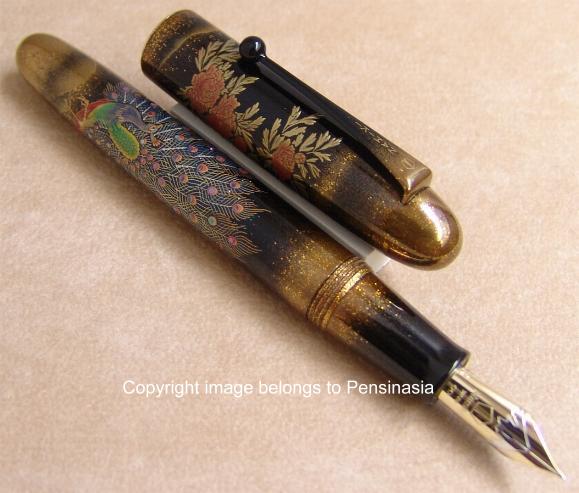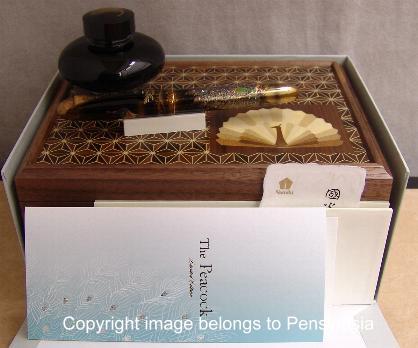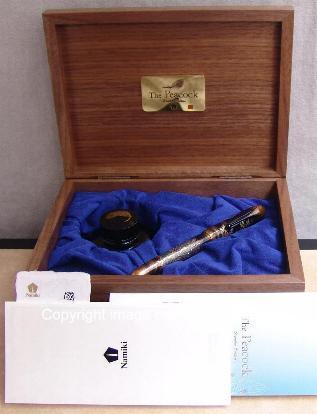|




The Peacock 2005 Limited
Edition
The peacock is a very
beautiful and exotic bird. The Indian (Blue) Peacock, the subject of this
treasured pen, is a robust bird able to withstand a cooler climate. At the
tip of its well-developed tail-feather train are numerous green and blue
eyespots that shine brightly as they reflect light.
During the mating season,
the male bird deploys its tail feathers in a fan-shape to attract the
female. The tail feathers are replaced every year with a new array of
brilliant hue.There are three species of wild peacocks: The Indian
(Blue) Peacock, the Javanese Green Peacock and the Congo Peacock.



In India, from ancient
times, peacocks are reputed to have eaten poisonous snakes. They were also
believed to be able to sense the approach of the rainy season. Both these
powers were deified, eventually leading to the advent of a peacock deity,
known as Mahamayuri. Therefore, peacocks figure extensively in Buddhism. A
century or so after Buddhism was introduced into Japan, this Mahamayuri
concept entered Japan during the Nara period (710 - 784). Mahamayuri was
worshipped, as it was believed that it had the power to counteract poisons
of all kinds, ensure good health and invoke rain.
Ancient records show that
in 597, peacocks were brought to Japan from Silla (Korea) and presented to
people of exalted positions in society. They are very beautiful and rare
birds and appear in Japanese paintings as well as on hanging scrolls (Kakeziku)
and screens (Byoubu), and for door decorations (Fusuma). There are many
such outstanding works of art still in existence today.
Only 80 Peacock limited
edition pens have been made, worldwide. The body of the Yukari Royale pen
has been decorated by skilled artisan Masato Sato employing refined Maki-e
techniques. These include the Hira Maki-e technique (gold powder sprinkled
onto lacquer and polished), the Togidashi Maki-e technique (lacquer layer
burnished to reveal the design beneath), and the Taka Maki-e technique
(high relief designs). A Raden mother-of-pearl technique is used for the
tip of the tail feathers and particles are embedded to depict the eyespots
on the magnificent tail. The pen cap features a peahen and peony flowers.
The peony is known as the king of flowers in the East, where it is
considered to be the supreme flower.



An 18K nib with rhodium
accent and piston ink delivery system is also featured. A special ink
bottle designed specifically for this pen completes the presentation.
A Hakone wood mosaic box
has been specially made for this series. During the Edo period (1603 -
1869), wooden mosaic parquetry was a major export product and the
exquisite craftsmanship earned its artisans an excellent reputation. At
that time, these artifacts were made in many locations in Japan including
Nagano, Shimane and Hyogo. However, today, the only remaining form of this
craft is the Hakone wooden mosaic style, and it has been designated as
traditional craftwork.




18K Solid Gold Nib

Filling Mechanism
|
